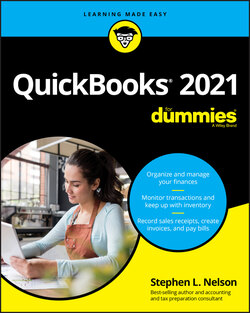Читать книгу QuickBooks 2021 For Dummies - Nelson Stephen L., Stephen L. Nelson - Страница 33
The Rest of the Story
ОглавлениеIn the preceding paragraphs of this chapter, I describe how you prepare for and then step through the QuickBooks Setup process. When QuickBooks Setup is over, though, you need to take care of three other little jobs:
You need to describe in detail your inventory, your customer receivables, and (if you chose to track vendor bills you owe) your vendor payables.
You need to describe your current business finances, including any year-to-date revenue and year-to-date expenses that aren’t recorded as part of getting your customer receivables and vendor payables entered into QuickBooks.
If you want to use accrual-basis accounting, you need to make an adjustment.
These chores aren’t time-consuming, but they’re the three most complicated tasks that you need to do to set up QuickBooks. (If you aren’t sure what the big deal is about accrual-basis accounting, I respectfully suggest that you take a break here and read Appendix B.)
To set up the inventory records, you just identify the item counts you hold in inventory, as described in Chapter 3.
To set up your customer receivables and (if necessary) vendor payables, you first need to enter customer invoices that were prepared before the conversion date but are still uncollected at conversion, as described in Chapter 4. Similarly, you may need to enter vendor payables that were incurred before the conversion date but are still unpaid at conversion.
I talk about this stuff more in Chapter 3, so if you’re still okay with doing some more installation and setup work, go ahead and flip there. However …
